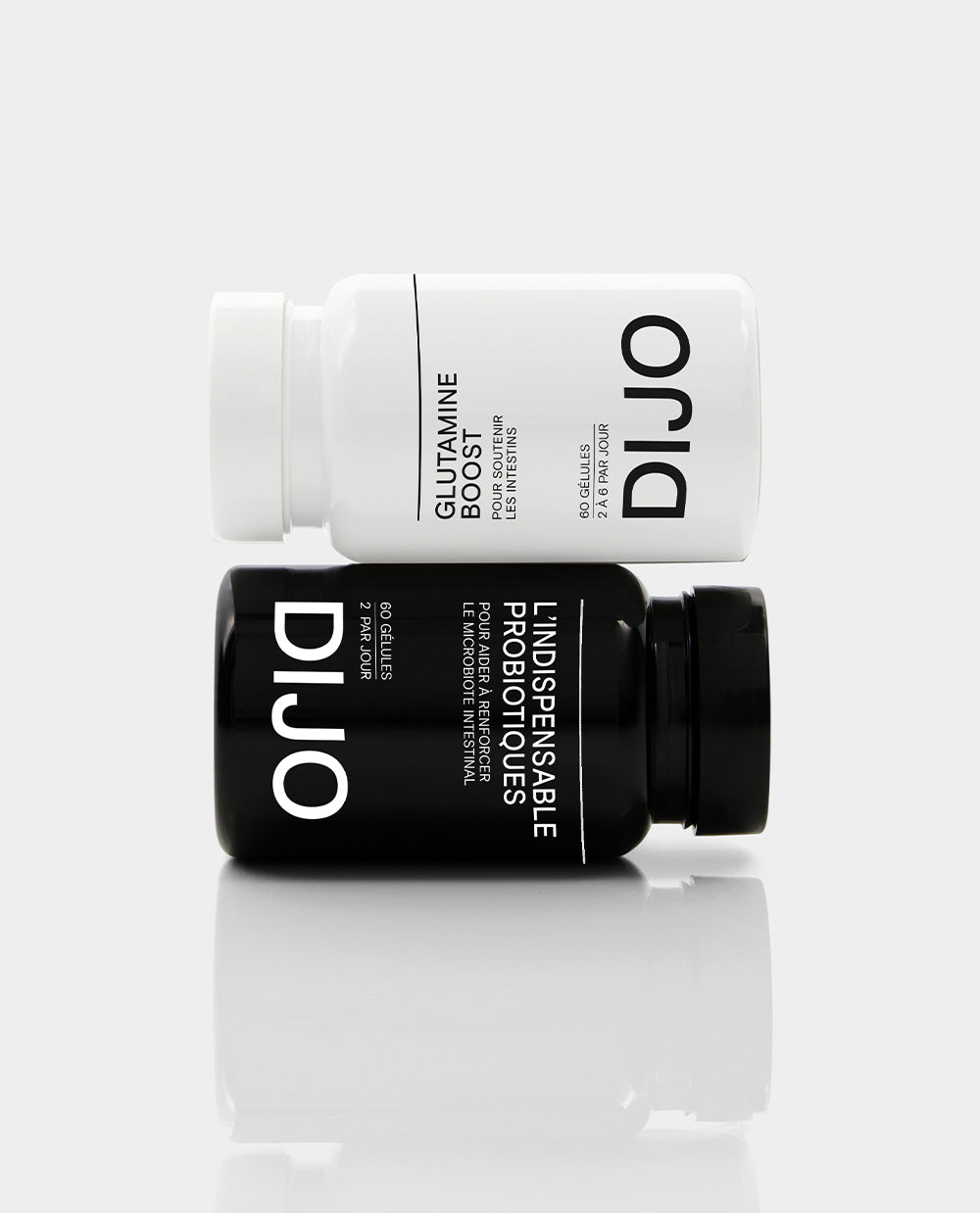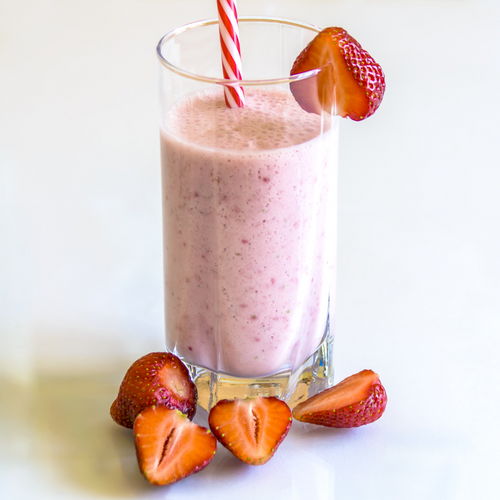What you must remember :
- Different types of stomach pain can occur during physical exertion.
- Physical activity, whatever its intensity, creates a particular physiological situation for our body, which has repercussions on the proper functioning of our digestive system.
- Unsuitable diet and stress are examples of causes that can lead to stomach pain during physical exertion.
- Establishing a diet adapted to your sporting practice is necessary to prevent the occurrence of stomach pain during and after exercise.
- Taking care of your microbiota and your intestinal mucosa is essential for digestive comfort during exercise.
Whether you are a high-level or casual athlete, there is a good chance that you have already experienced stomach pain after your training session. Don't worry, you are not alone in this situation. Indeed, it is generally said that physical activity is essential to maintain our physical and mental health. But what is not necessarily said is that it can sometimes cause unwanted effects, such as stomach pain, when its approach is not optimal.
Types of stomach pain and their origins
When you exert yourself, different types of stomach pain may occur. Understanding these pains and their origins will help you better manage your comfort during and after exercise, which will help you perform better. Here is a non-exhaustive list:
1 - Gas and bloating
Gas and bloating are common problems during exercise and can arise from several factors. During exercise, body movements can cause agitation in the intestines, releasing accumulated gases. Additionally, rapid, shallow breathing during exercise can lead to excessive air ingestion, increasing the presence of gas in the stomach. Trapped gas can cause pain, bloating and a feeling of abdominal distension. To minimize these discomforts, choose a balanced diet and adapt your diet before exercise.
2 - Transit disorders associated with sport
Transit disorders, such as diarrhea, are often linked to exercise. Indeed, diarrhea can result from reduced blood flow to the intestine during exercise, thus disrupting digestion and intestinal transit .
3 – Heartburn and acid reflux
Heartburn and acid reflux are respectively a sour feeling in the stomach (just below the chest) after a meal, and burning sensations that can go from the stomach to the throat , or even the mouth. Physical exertion can stimulate the production of stomach acid, which can lead to heartburn and acid reflux. Additionally, the reclined or bent position in certain sports or strenuous movements can promote gastric reflux , where stomach contents flow back into the esophagus. This can cause discomfort, burning and tingling sensations in the chest and throat.
The causes of stomach pain during and after physical exertion
During rest periods, our digestive system concentrates on its main task: digesting food , to extract the nutrients necessary for the proper functioning of our body. However, physical activity, whatever its intensity, creates a particular physiological situation for our body, which has repercussions on the proper functioning of our digestive system. This is why it is not uncommon to feel stomach pain after physical exertion. Let's take a look at a non-exhaustive list of the different causes that can contribute to stomach pain during and after exercise.
1 - An unsuitable diet around physical effort
Did you know that when you are about to exercise, what you eat and when you eat it can have a significant impact on your digestive comfort during and after exercise? In fact, an unsuitable diet before exercise is one of the main causes of stomach pain during and after physical exertion. First of all, consuming foods rich in fiber (whole grains, legumes, vegetables, etc.) and cooked fats close to your training sessions can lead to slow and incomplete digestion, responsible for digestive discomfort. Spicy or acidic foods can also irritate the stomach lining, contributing to stomach pain. In addition, allowing insufficient time between the last meal and physical exertion can increase the risk of digestive disorders due to unfinished digestion. It will therefore be necessary to opt for meals adapted to physical effort.
2 - Reduced blood supply to the stomach during exercise
Physical exertion has a strong influence on the blood supply of our entire body. When the body is at rest, blood is distributed to all organs, with priority for those useful for digestion. On the other hand, during physical effort, the body will readjust this blood distribution in order to meet the needs of the active muscles and provide them with the oxygen necessary for their proper functioning. Some of the blood that would normally be routed to your digestive system, including the stomach, is redirected to the muscles being used. This physiological phenomenon is called “ intestinal ischemia-reperfusion ”. It can cause digestion problems, cause feelings of heaviness and cause stomach pain during and after physical exercise. Indeed, this reduction in blood supply to the intestinal level leads to a slowdown in the normal movements of the stomach and intestines, which prevents optimal digestion and causes bloating, stomach pain and feelings of discomfort.
3 - Mechanical stress and rebound
During physical exertion, such as running for example, the body undergoes mechanical stress. Repetitive movements from exercise can cause internal jolts to the digestive system, which can disrupt digestion. This can lead to stomach pain, cramps , or a general feeling of discomfort in the abdominal area during and after exercise. If your stomach contains food that is being digested, sudden movements can make these symptoms worse.
4 – Dehydration during exercise
During exercise, the body loses water through sweat to maintain its temperature. If you don't make up for this loss by drinking enough, it can slow down your digestion and intestinal transit, which can cause bloating, digestive discomfort and stomach pain. In addition, dehydration increases the phenomenon of ischemia-reperfusion seen previously, and therefore digestive disorders. To avoid this, it is essential to stay well hydrated by drinking water regularly throughout the day and adapting your intake during exercise taking into account what is lost through sweating. However, be sure to pay attention to how you hydrate yourself during exercise. In fact, taking too large a volume of liquid or the nature of the drink chosen can lead to the risk of discomfort through distention of the stomach, vomiting, acceleration of transit or even diarrhea.
5 - Stress and anxiety
Stress and anxiety exert a significant influence on the digestive system, contributing to stomach pain during and after exercise . Indeed, when you are stressed or anxious, your body releases hormones, such as cortisol, which disrupt digestion. In addition, with the link between the gut and the brain that has been demonstrated, emotions like stress will directly impact our gut by increasing their sensitivity and causing stomach pain. Also, our body copes with stress by diverting blood to the muscles in “fight or flight,” which further disrupts the digestive system and worsens stomach pain.
6 - Pre-existing digestive problems
Stomach pain during and after physical exertion may be intensified in individuals with pre-existing digestive problems such as irritable bowel syndrome or Crohn's disease. Exercise-induced muscle contractions can trigger pain and spasms, especially for people sensitive to movement. The inflammatory state associated with these disorders can also be exacerbated by physical exertion, causing gastrointestinal symptoms.
Physical effort and intestinal hyperpermeability
Did you know that physical exertion can lead to an increase in intestinal hyperpermeability? Intestinal hyperpermeability , also called intestinal porosity, is a condition where the protective barrier of our intestine becomes more permeable than normal. The intestine then becomes a real “sieve”. We mentioned previously that, during physical effort, blood redistribution takes place to the benefit of the muscles and to the detriment of the digestive system. When the exercise stops, functioning returns to normal and there is a phenomenon of organ reperfusion. However, this significant blood flow is responsible for a high oxygen supply, which creates oxidative stress in the intestine and weakens the intestinal wall. This explains why physical exertion can compromise the integrity of the intestinal barrier and lead to intestinal porosity . This is all the stronger as dehydration due to exercise is significant.
Our advice for preventing and managing your stomach pain during and after exercise
1 - A suitable diet before and during exercise
By adjusting your food choices and schedule, you can significantly reduce the risk of stomach pain during and after your exercise sessions. Here are our tips to help you before and during exercise:
Nutrition before exercise
Before exercise, limit risky foods (rich in fiber, fatty, spicy, etc.) and favor the consumption of tender, ripe or even cooked fruits and vegetables to facilitate digestion. Before exercising, opt for foods rich in simple, easy-to-digest carbohydrates. Carbohydrates provide a quick source of energy, ideal for supporting your physical activities. Fruit and light energy bars are great options. If you eat before an exercise, be sure to leave at least an hour to give your stomach time to digest properly and pay attention to how you feel.
In general, during physical exercise, choose a diet that offers a quick source of energy without causing digestive discomfort. Here are some examples :
- Energy gels containing simple carbohydrates
- Balanced energy bars
- Sports drinks providing electrolytes and carbohydrates
- Dried fruits for natural sugars
-
Fruit jellies
Also, make sure you drink a sufficient and regular amount of water to maintain hydration. But be careful not to drink too quickly! It is recommended to around 500 ml/h, or 1 to 2 sips (100 - 150 ml) every 7 to 10 minutes, to give you an idea. Whether for hydration or nutrition, do not hesitate to seek advice from a health professional if you feel the need.
2 – Sufficient and regular hydration
In addition to monitoring your diet, we have seen that hydration is also crucial to prevent stomach pain that can occur during or after physical exertion. Drinking enough water before exercise keeps your body well hydrated, aids digestion and prevents feeling heavy. However, avoid drinking large amounts right before exercising, as this can cause abdominal discomfort or even vomiting. During exercise, it is advisable to drink the same quantity of water as that lost through sweating. So, you can weigh yourself before exercise and after in order to see the quantity of water lost (do not forget to subtract from this value the water drunk during exercise if this is the case) and you will have the amount you should drink during exercise to avoid dehydration and prevent stomach pain.
3 – A microbiota and a healthy intestinal wall
The intestinal microbiota , made up of billions of microorganisms, contributes to digestion, nutrient absorption and the regulation of the immune system. An imbalance in the microbiota can disrupt these functions, leading to inflammation and intestinal hypersensitivity, which can worsen stomach pain during exercise. Additionally, a healthy intestinal wall plays an essential role for good intestinal health. Indeed, a damaged intestinal barrier can allow the passage of toxins and unwanted molecules into the bloodstream, causing inflammatory reactions and abdominal pain. Maintaining a balanced microbiota and a functional intestinal wall is essential to prevent stomach pain during and after physical exercise.
At DIJO, we have created the Regenerated Intestines pack , which combines two products: Essential probiotics to restore balance within your intestinal microbiota, and Glutamine , a product from our belly care range to restore the integrity of your intestinal wall. In other words, this pack contains your two allies to repair your shield which are the intestines. You can say goodbye to stomach pain during and after exercise.
4 – A proper warm-up
A proper warm-up before exercise can help prepare your body for intense movements. Light, targeted stretches can also help loosen your muscles and reduce abdominal tension. Once the exercise is finished, take the time to stretch gently to soothe the stressed muscles.






















